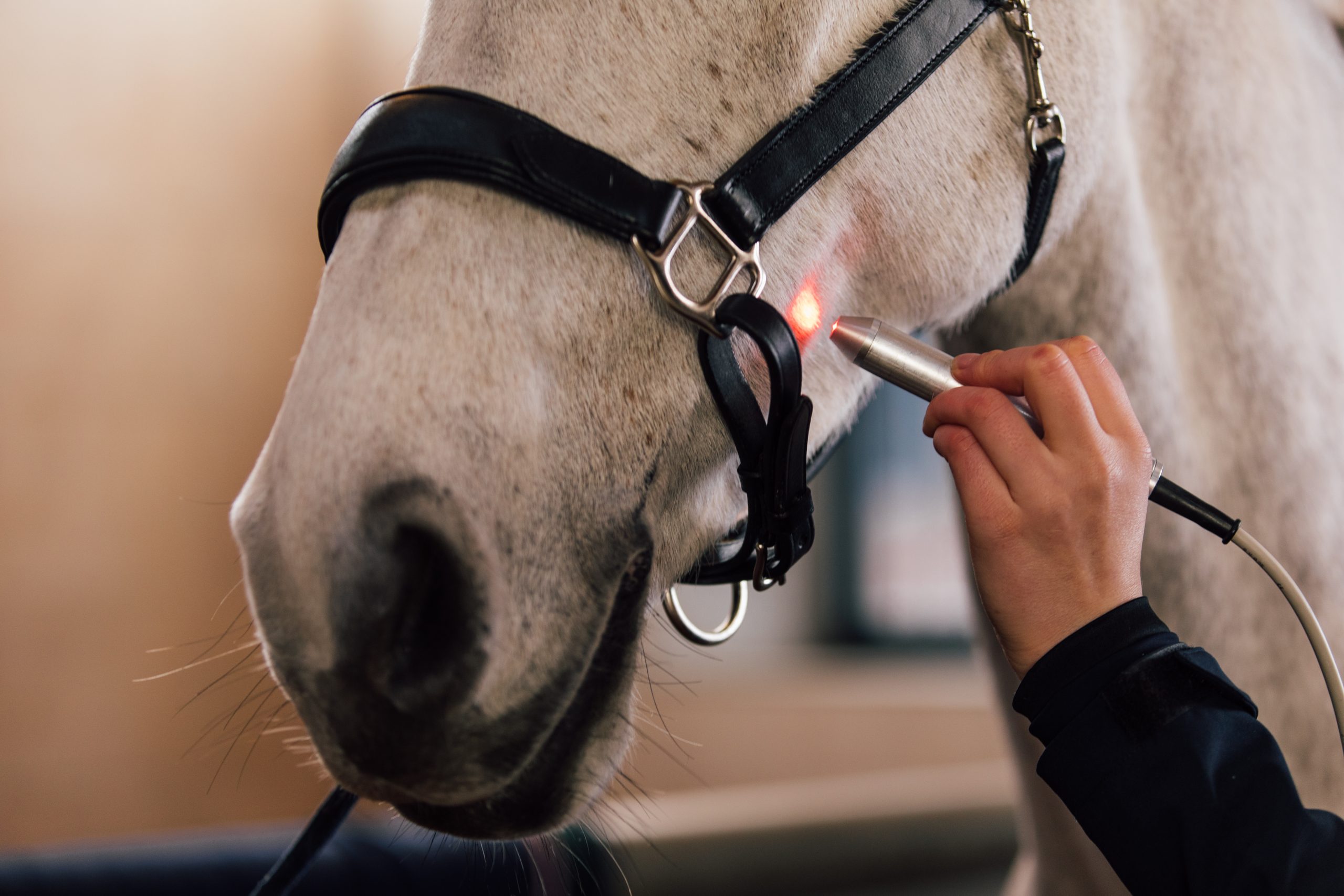Equine Therapy for Kid: Psychological and Behavioral Assistance Discussed
Equine Therapy for Kid: Psychological and Behavioral Assistance Discussed
Blog Article
Assessing the Performance of Laser Treatment in Equine Therapy for Injury Rehab
The examination of laser treatment's performance in equine injury rehabilitation hinges on numerous variables, including recuperation time, discomfort mitigation, and tissue regeneration. Vets regularly observe exceptional end results with laser therapy contrasted to standard methods, placing it as a vital component in equine treatment. Equine Therapy.

Understanding Laser Treatment
Laser therapy has actually ended up being a crucial device in veterinary medication, particularly in the treatment of equine problems. Known for its non-invasive nature and efficiency, laser therapy entails the application of particular wavelengths of light to boost cells fixing and minimize swelling. This therapeutic method is progressively preferred for its capacity to speed up the recovery process in steeds struggling with a variety of musculoskeletal injuries and persistent problems.
The primary device behind laser treatment is its capacity to improve cellular features. When laser light passes through the skin, it is absorbed by mitochondria, the powerhouse of cells, which causes boosted production of adenosine triphosphate (ATP) This biochemical energy increase promotes cellular repair and regrowth. In addition, laser therapy advertises vasodilation, boosting blood circulation and oxygen distribution to broken cells, therefore speeding up recovery.
In equine medicine, laser treatment is especially useful for problems such as tendonitis, osteo arthritis, and injury recovery. The technique is lauded for its pain-relieving properties, enabling equines to regain flexibility and feature much more quickly. Veterinarians also value its marginal side impacts compared to various other therapy techniques, making it a trusted and secure alternative for equine treatment.
Exactly How Laser Therapy Functions
To understand how laser treatment works, it is vital to explore the interaction in between light energy and organic cells. Laser therapy, likewise called Low-Level Laser Therapy (LLLT) or photobiomodulation, utilizes certain wavelengths of light to penetrate tissues and boost mobile procedures. The mechanism depends upon the absorption of photons by cell chromophores, mostly within the mitochondria, which are important for power manufacturing.
Upon absorption, these photons trigger a collection of biochemical adjustments, enhancing mitochondrial feature and leading to raised adenosine triphosphate (ATP) manufacturing. This increase in ATP speeds up cellular metabolic process, advertising cells repair work and regrowth. Additionally, laser treatment modulates inflammatory responses by affecting cytokine degrees and reducing oxidative tension, thus minimizing pain and swelling.
One more substantial aspect of laser therapy is its role in boosting microcirculation. The treatment promotes vasodilation, boosting blood circulation and oxygen delivery to broken cells. This helps with the elimination of mobile particles and sustains the spreading of fibroblasts and collagen synthesis, vital for wound recovery.
Clinical Proof
The effectiveness of laser treatment in equine treatment has actually been substantiated through different scientific researches, showcasing its healing potential across a series of conditions. A number of regulated tests and observational studies have actually recorded substantial improvements in tissue repair work, pain decrease, and general rehabilitation timelines. For circumstances, a research conducted by Turner et al. (2012) showed that horses treated with low-level laser therapy (LLLT) for tendon injuries exhibited increased recovery compared to those getting standard treatments. The research highlighted a significant reduction in inflammation and improved collagen formation.
In a similar way, study by Johnson and coworkers (2015) concentrated on equine muscle mass injuries, disclosing that laser treatment considerably accelerated muscle fiber regrowth and minimized muscle mass stiffness. These findings were proven by histological evaluations revealing better muscle tissue organization. In addition, clinical evaluations have actually revealed that laser therapy can minimize chronic problems such as osteo arthritis. A research by Smith et al. (2018) reported that equines with osteoarthritic joints experienced notable pain relief and increased variety of activity complying with a routine of laser treatment sessions.
Vet Insights
Veterinary professionals have actually significantly identified the value of laser therapy in equine therapy, mentioning both empirical evidence and firsthand experience. Dr. Jane Smith, a leading equine vet, notes that laser therapy has actually revealed remarkable efficiency in minimizing inflammation and increasing cells fixing. "In my method, I've observed much faster recovery times in horses treated with laser therapy compared to conventional techniques," she states. This belief is echoed by Dr. John Doe, who highlights that laser therapy supplies a non-invasive choice with minimal negative effects, great site making it especially fit for equine clients.
Vets additionally appreciate the convenience of laser treatment. She points out that laser treatment can be customized to the particular requirements of each steed, making sure ideal end results.

Practical Considerations
A vital element of implementing laser therapy in equine treatment involves comprehending the useful factors to consider that guarantee its efficacy and security. It is crucial to choose the ideal laser gadget, as different types differ in wavelength, power, and penetration deepness (Equine Therapy). Veterinarians need to be skilled in these specifications to customize treatment protocols properly per injury type
Moreover, the frequency and duration of laser therapy sessions require mindful planning to make best use of restorative benefits while minimizing look at these guys any possible unfavorable impacts. Constant tracking of the steed's reaction to treatment can guide essential adjustments in the therapy regimen. Establishing a risk-free and regulated environment during treatments is likewise vital to protect against unintentional direct exposure to laser discharges, which can hurt both the steed and the handler.
Training and qualification of personnel administering laser treatment are vital to guarantee proper method and to support safety criteria. In addition, preserving precise records of each session, including laser setups and observed end results, is essential for examining the overall efficiency of the treatment and for making data-driven decisions.
Final Thought
Laser treatment has emerged as an efficient modality in equine injury recovery, providing significant benefits in healing time, discomfort alleviation, and cells healing. For optimum results, continuous monitoring and customized therapy procedures remain crucial look at this site in leveraging the complete possibility of laser therapy in equine care.
Report this page